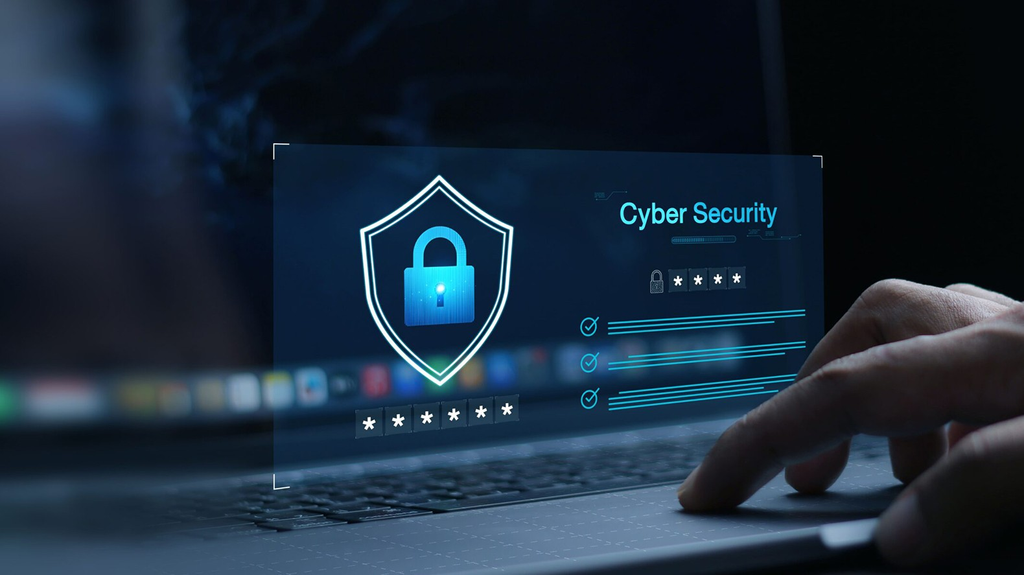The Future of Cybersecurity: Safeguarding Data in an Evolving Digital World

As the world's digital transformation picks up speed, cybersecurity is becoming a top concern for businesses, governments, and individuals alike. With the advancement of artificial intelligence, cloud computing, the Internet of Things (IoT), and blockchain, the landscape of cyber threats grows increasingly complex. The need for innovative, robust security strategies has never been greater. Protecting data and personal privacy will be a constant challenge in this rapidly evolving landscape.
In this article, we explore emerging cybersecurity technologies, evolving cyber threats, and the role of AI in cybersecurity. We will also discuss the critical components of future-focused cybersecurity, including zero-trust security, cloud security, IoT security, blockchain technology, and other trends shaping the future of digital security.
Evolving Cyber Threats in the Digital Age
Cyber threats have grown more sophisticated, with cybercriminals using advanced tools and strategies to target organizations, governments, and individuals. Data breaches, malware, ransomware, and phishing assaults have all become increasingly common and destructive. As organizations store and process more data online, cybercriminals increasingly focus on breaching systems to exploit vulnerabilities.
The growth of AI-driven cyber threats is one significant worry. Malicious actors now use artificial intelligence to automate attacks, making them faster, more accurate, and harder to detect. AI-driven malware, for instance, can self-replicate and evade traditional detection methods. The future of cybersecurity will involve developing equally sophisticated defenses to combat these advanced cyber threats.
AI in Cybersecurity: Improving the Identification and Reaction to Threats
In cybersecurity, artificial intelligence has become a potent friend. One can analyze large data sets with AI and machine learning to find trends and flag possible dangers. AI can quickly adapt and react to new kinds of cyber threats by continuously learning from new data.
AI systems, for instance, can identify user behavior anomalies that might point to malicious activity, assisting security teams in spotting and addressing risks before they cause harm. Machine learning models also classify emails as spam or phishing attempts, reducing the risk of users clicking on malicious links. AI is already transforming cybersecurity, and its role will only expand as threats evolve.
In the future, AI-based cybersecurity solutions will play a critical role in identifying zero-day vulnerabilities—new, undiscovered security flaws. The ability of AI to quickly detect unusual behavior in networks will be invaluable in preventing breaches.
The Zero-Trust Security Model: A Modern Approach to Security
The zero-trust security concept has become more well-liked as a better way to protect digital assets. Traditionally, security models assumed that users inside the network were trustworthy. However, with the rise of insider threats, this assumption no longer holds. On the other hand, zero-trust security necessitates verification for each person and device trying to access resources, regardless of where they are on the network.
A zero-trust approach minimizes the chances of a successful breach by only granting access to verified users and devices. It segments the network to prevent attackers from moving laterally within the system if they breach one area. This “never trust, always verify” principle is likely to become the norm as organizations adopt zero-trust security to protect sensitive data and infrastructure.
Cloud Security: Protecting Information in the Cloud
Cloud security has emerged as a major concern since cloud computing has become indispensable for contemporary enterprises. Although there are many advantages to storing data on the cloud, there are drawbacks, particularly with regard to data security. Because cloud settings are so dynamic, security protocols need to be flexible in order to safeguard data as it transitions between cloud platforms and on-premises systems.
The shared responsibility approach, in which the customer and the cloud provider share security duties, is a significant obstacle in cloud security. Cloud providers often offer built-in security features, but customers must also implement their own security controls to protect sensitive data. Future cloud security strategies will likely focus on enhancing encryption, improving access control, and using AI to detect threats.
The application of Secure Access Service Edge (SASE) frameworks is another new development in cloud security. SASE combines network security and wide-area network (WAN) capabilities, enabling secure, seamless connections for users, no matter where they are. As cloud environments grow, organizations will increasingly rely on SASE and other cloud-native security tools to protect their data and applications.
IoT Security: Protecting an Expanding Network of Devices
By linking billions of objects to the Internet, the Internet of Things (IoT) is transforming a number of industries. Every connected device, however, is a possible point of entry for online dangers. Implementing strong security measures is challenging because many IoT devices have low processing power. Furthermore, security teams now find it difficult to efficiently control IoT devices due to their rapid proliferation.
In the future, IoT security will require a more proactive approach. Manufacturers must design IoT devices with security in mind, including regular software updates and stronger authentication measures. At the same time, organizations will need to implement network segmentation to isolate IoT devices from other systems, limiting the impact of a potential breach.
Emerging solutions like AI-driven IoT security monitoring systems will be instrumental in detecting and preventing attacks on IoT networks. Real-time data analysis from IoT devices allows these systems to detect and eliminate risks before they jeopardize other interconnected systems.
Blockchain Security: Leveraging Decentralization for Data Integrity
Blockchain technology is gaining traction in cybersecurity due to its decentralized, tamper-resistant nature. Because it can keep data across several nodes, hackers will find it more difficult to change information. This decentralization enhances data integrity and security, which is crucial for applications like financial transactions, digital identity verification, and supply chain tracking.
The field of digital identity management is one where blockchain security is becoming more popular. Without depending on a centralized authority, consumers can manage their personal data with blockchain-based solutions. This technique could enhance data privacy and significantly lower the danger of identity theft.
In the future, blockchain security is expected to play a larger role in safeguarding transactions and securing sensitive information. Blockchain could also support zero-trust security initiatives, where user identities and data transfers are verified through distributed ledgers.
Cybercrime and Data Privacy: Navigating Complex Regulatory Environments
The regulations designed to protect data privacy are becoming more complex in tandem with cyber dangers. Strict procedures to protect consumer data are required by laws like the California Consumer Privacy Act (CCPA) and the General Data Protection Regulation (GDPR), with significant penalties for noncompliance. These laws have increased the focus on data privacy and cybersecurity, pushing organizations to implement stricter data protection protocols.
In the future, organizations will need to align their cybersecurity strategies with evolving regulations. They will also have to balance privacy concerns with the need for advanced threat detection, as privacy regulations often restrict data collection practices. Differential privacy and federated learning are two AI-based privacy-enhancing technologies that are anticipated to become solutions for data protection while facilitating threat detection.
The Role of Digital Security in Preventing Cybercrime
Cybercrime has evolved into a highly organized, profitable industry. Hackers employ complex strategies to compromise networks, steal information, and interfere with services. As cybercriminals become more organized, cybersecurity professionals must also adopt a strategic, proactive approach to defending against these threats.
Digital security initiatives, such as employee training, incident response planning, and continuous security monitoring, are essential to combat cybercrime. Investing in robust firewalls, intrusion detection systems, and threat intelligence solutions will also be crucial to staying ahead of cybercriminals.
Future Technologies and Solutions for Cybersecurity
The combination of several technologies, including blockchain, AI, machine learning, and quantum computing, will be essential to cybersecurity in the future. When it comes to identifying and countering cyber threats, each of these technologies offers special benefits. Quantum computing, for example, has the potential to revolutionize encryption by generating complex cryptographic keys that are virtually impossible to break.
Another important future trend is automation in cybersecurity. Compared to human teams, automated security systems are able to analyze large volumes of data and react to threats more quickly. AI-powered Security Orchestration, Automation, and Response (SOAR) platforms, for example, can expedite incident response, assisting enterprises in quickly identifying and containing breaches.
Data Privacy and Digital Security in a Hyperconnected World
Data privacy will remain a top concern in the future of cybersecurity. With the exchange of data across various networks and devices, organizations must prioritize security at every level. Implementing end-to-end encryption, using secure communication protocols, and ensuring data residency compliance are all essential for protecting privacy.
Privacy-by-design principles, which embed privacy into systems from the outset, will also become more common. Identity-centric security models will probably be implemented by organizations to provide users greater control over their personal data and lower the possibility of data misuse.
Conclusion: A Proactive Approach to Future Cybersecurity
The future of cybersecurity demands a proactive, multifaceted approach. Organizations must embrace cutting-edge technologies like blockchain, AI, and zero-trust models as cyber threats continue to change in order to stay ahead. Data privacy and regulatory compliance will also play significant roles in shaping cybersecurity strategies, pushing organizations to implement solutions that protect sensitive information without compromising user privacy.
For organizations looking to fortify their defenses, cybersecurity solutions like the FortiGate firewall can be instrumental. FortiGate provides comprehensive defense against a variety of online dangers, such as sophisticated viruses, intrusions, and unauthorized access. With the right cybersecurity framework and technology in place, organizations can safeguard their digital assets and prepare for a secure, resilient future in a digital-first world.
